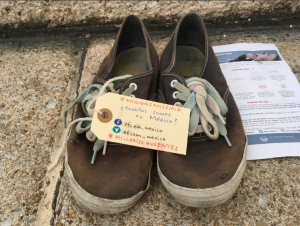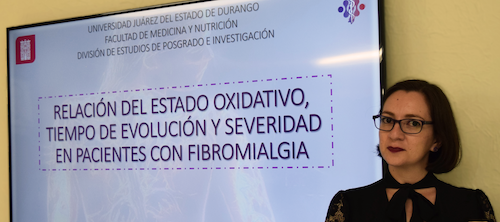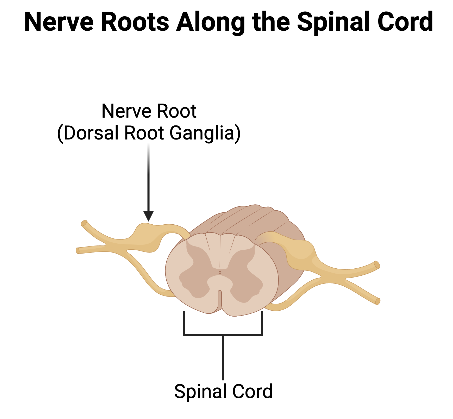Part 1: Millions Missing in Mexico
In the first of a three-part series, people describe the challenges of living with neuroimmune diseases in Mexico. The science of these diseases is also discussed, and we try to understand why the latest science is not informing proper medical treatment.
“It was as if all my strength had been sucked out of me.” At 32 years old, Daniela Herrera Villarreal developed simultaneous infection of her throat and stomach, beginning a quest for medical understanding. More than three years later, she has had to abandon her masters degree in anthropology and is incapable of standing for more than 10 minutes at a time. Image courtesy of Millions Missing Mexico.

Versión en español • Versão em português
By Eric Pyrrhus
Versión en español • Versão em português
“On days when the symptoms are manageable, I walk from the bed to the bathroom or from the bed to the kitchen. But there are other days where my mobility inside the house has to be with the wheelchair,” reports 36-year-old Daniela Herrera Villarreal, originally from Oaxaca.
“Finally, when the symptoms are severe, it is simply not possible for me to get out of bed or do any kind of activity,” she adds. “Those days I spend completely in the dark and in silence.”
Daniela suffers from myalgic encephalomyelitis/ chronic fatigue syndrome (ME/CFS). ME/CFS is a debilitating neuroimmune disease involving both the nervous system and the immune system.
Although there can be many symptoms of ME/CFS, the most recognizable aspect of the disease is called post-exertional malaise (PEM) which is a profound exacerbation of the underlying symptoms triggered by any type of exertion.
“I was 32 when I had simultaneous infections, stomach and throat, which took a long time to heal. When I finally got over the infections I tried to get back to my normal life, however, my energy was no longer the same — it was as if all my strength had been sucked out of me,” Daniela said.
“So I went back to look for a diagnosis and something to help me with what was happening to me, but no doctor could help me.”
And that was just one of the new problems she encountered.
“Along the way I also lost some very close friends, who believed I was somatizing and/or faking it for attention. It was painful to hear the comments and opinions that were being said about me.”
And 27-year-old Elizabeth Macías, from Aguascalientes, tells a similar story. “Honestly with this disease you don’t know how you’re going to wake up. There are days that are not so bad, but I regularly wake up badly, it’s hard for me to get out of bed — and then there are days when I have a crash and I can’t move at all.”
Elizabeth suffers from fibromyalgia, another debilitating neuroimmune disease, involving both the nervous system and the immune system. Fibromyalgia is often confused with ME/CFS, but in fibromyalgia there is a prominent and widespread chronic pain.
“I got sick when I was 15 years old, just a few months into high school. I felt very weak, tired and in too much pain.” Her doctor diagnosed her with an episode of anemia. “It was after that anemia that I ended up with fibromyalgia.”
Falling ill at such a young age has been, simply put, disastrous.
“This disease takes away everything you have — first of all your health, goals, dreams, study, work, friends, hobbies — you even get to a point where you lose yourself.”

The stories of Daniela and Elizabeth are just two of the stories told by countless people in Mexico — people who are left completely missing from society, hidden away in their beds.
“Given how little is known about ME/CFS in Mexico, we don’t have estimates of the number of people with ME/CFS here,” explains 35-year-old María Richardson, originally from Monterrey.

In 2018, the group Millions Missing Mexico left empty shoes around “The Angel of Independence” monument in Mexico City to represent the countless people missing from Mexican society. Photo courtesy of Millions Missing Mexico.
Patricia “Paty” Martínez, 49, from Baja California Sur, manages a popular website for patients.
As she explains, “I am a hard worker, a fighter, strong-willed, with a spirit that loves life, I don’t like to victimize myself. But none of this has been able to beat the pain and all the symptoms I have to live with every day.”
On her website, Paty Martínez conducted surveys of fibromyalgia patients in Mexico. One survey asked how old patients were when they first fell ill, and the responses ranged all the way from 6 years old to 50 years old.
Another survey asked how much time passed between falling ill and receiving a diagnosis of fibromyalgia, and the average amount of time was a prolonged period of 11 years.
And the effects of the illness stretch far beyond the debilitating symptoms. According to a scientific publication by Dr. Karla Núñez Nevárez of the School of Medicine at Juárez University of Durango, “due to fibromyalgia 22% have been fired from their jobs and 56% have had to resign.”

Dr. Karla Núñez Nevárez is a scientific researcher at the Juárez University of Durango.
Photo courtesy of Dr. Karla Núñez Nevárez.
“This may be due to the fact that three-quarters of them have a severe to extreme severity of the disease, which makes it difficult to perform common tasks at work, as well as to comply with an established schedule, leading them to experience economic difficulties.”
When we asked Dr. Karla Núñez Nevárez how many of those patients received a government disability pension, she replied that “none of the patients have a pension secondary to fibromyalgia.”
In fact, the impacts of the disease affect almost every aspect of the patient’s life.
According to a scientific study by Dr. Cindy Bandala, Professor and Director of Research at the National Polytechnic Institute of Mexico, “living with a disease such as fibromyalgia causes quality of life, daily functioning, emotional health and social relationships to be affected in over 70%. This is why it is very important to generate interdisciplinary interventions and provide support for this population that has been neglected for many years.”

Diagnostic confusion
It is hard to discuss the situation for patients in Mexico without first addressing the profound diagnostic confusion between ME/CFS and fibromyalgia. Thirty years ago, doctors were trying to define ME/CFS based on the single symptom of fatigue and doctors were trying to define fibromyalgia based on the single symptom of pain.
Both over-simplistic approaches failed. Many people who only had chronic fatigue were incorrectly diagnosed with ME/CFS and many people who only had chronic pain were incorrectly diagnosed with fibromyalgia.
Fortunately, modern definitions of ME/CFS and fibromyalgia incorporate all the patient’s symptoms in a comprehensive way.
The modern diagnostic criteria for ME/CFS, put together by an international committee of experts, says that the main symptom of ME/CFS is post-exertional malaise (PEM), a significant and abnormally prolonged physical and⁄or cognitive weakness in response to exertion.
The modern diagnostic criteria also require at least three neurological symptoms, three immune or gastrointestinal symptoms, and an additional symptom related to energy production.

The modern diagnostic criteria for ME/CFS was published by an international group of experts in 2011.
From J Intern Med. 2011 Oct; 270(4):327-38. Licensed CC-BY-NC-ND.
The modern diagnostic criteria also list cognitive dysfunction and sensory hypersensitivities as secondary symptoms.

The modern diagnostic criteria for fibromyalgia was published by an international group of experts in 2018.
From J Pain. 2019 Jun; 20(6):611-628. Licensed CC-BY-NC-ND.
“Although some national institutes [of health] have talked about ‘chronic fatigue syndrome’ and differentiated it a bit from fibromyalgia, they’ve only reported on generalized fatigue, ignoring the now-identified-as-cardinal feature of post-exertional malaise,” explains María Richardson.
“I emailed a roster of rheumatologists, neurologists, and primary care doctors in Mexico, asking if they knew about ME/CFS (and attaching updated resources to the emails). Most didn’t respond. A few said they didn’t treat people with it. At least five told me that what I had was called fibromyalgia.”
According to pediatrician Dr. Margarita González Duran, some of the diagnostic confusion between the two diseases is due simply to the fact that many doctors are unaware that these diseases exist.
“At the public health level, there is a lot of misinformation on the subject. I believe that as long as they are not considered as real — not imaginary — diseases, the line between them is very narrow.”

What the science says
Although scientific research on ME/CFS and fibromyalgia is ongoing, and there is still a lot to learn, there have recently been some fascinating scientific discoveries regarding interactions between the nervous system and the immune system.

The nervous system and the immune system can interact in the brain, at the nerve roots along the spinal cord, and at the nerve endings.
Created for Phoenix Rising with BioRender.com
The first of these scientific discoveries is the finding of neuroinflammation in the brains of patients with ME/CFS or fibromyalgia. The term “neuroinflammation” refers to the observation that nerve cells in the brain seem to be attracting immune cells called “microglia.”
Neuroinflammation was discovered in the brains of patients with ME/CFS in a 2014 scientific publication by Japanese researchers. Neuroinflammation was also discovered in the brains of fibromyalgia patients in a 2018 scientific publication by researchers at Harvard University.
Other researchers are now pursuing neuroinflammation research in these diseases to find out why nerve cells in the brain seem to be attracting immune cells.
The second of these scientific discoveries is the finding of inflammation in specific nerve roots located along the spinal cord in patients with ME/CFS or fibromyalgia. These nerve roots, called “dorsal root ganglia,” are responsible for collecting sensory information from the body and sending this sensory information to the brain.

The Dorsal Root Ganglia are nerve roots that run along the spinal cord.
Created for Phoenix Rising with BioRender.com
In ME/CFS, inflammation of these nerve roots was found in three out of four autopsies performed on ME/CFS patients, a finding that was also noted in two other autopsies of ME/CFS patients. Specifically, the autopsies found that these nerve roots were attracting immune cells called “lymphocytes.”
In fibromyalgia, inflammation of these nerve roots was suggested by a 2021 study by British scientists. In this study, researchers took immune molecules called “antibodies” from fibromyalgia patients and tested them in the laboratory. These antibodies were attracted to the nerve roots that had been extracted from an otherwise healthy person. The researchers also injected the antibodies into mice and found that the antibodies were attracted to the nerve roots of the mice as well.
What was particularly interesting about this British study was the finding that the immune system of fibromyalgia patients did not seem to be generating specific antibodies that were attracted to a specific part of the nerve roots. Instead, the immune system of fibromyalgia patients seemed to be generating various non-specific antibodies that were attracted to various parts of the tissue surrounding the nerve roots.
Such a finding is consistent with a known immunological phenomenon called “epitope spreading.” Normally, an infection causes the immune system to produce antibodies that are specifically attracted to the infection. However, in epitope spreading, the immune system also produces various non-specific antibodies that are attracted to various parts of the tissue surrounding the location of the infection.
Finally, the third scientific discovery regarding interactions between the nervous system and the immune system concerns the nerve endings that are located just under the skin. The small fibers in these nerve endings are seen to be degenerated in some patients with ME/CFS and in some patients with fibromyalgia. At least in fibromyalgia, patients with this degeneration tended to have worse symptoms.

Nerves end in small fibers located just under the skin.
Created for Phoenix Rising with BioRender.com
Such scientific discoveries represent only one part of the biomedical research into neuroimmune diseases. But they may hold the key that leads to a better understanding — and a better treatment of patients.

What doctors say
“When I was in medical school we saw only one paragraph on fibromyalgia (in the 10 semesters of medical school) and absolutely nothing on ME/CFS,” says Dr. Karla Núñez Nevárez of the School of Medicine at Juárez University of Durango.
Pediatrician Dr. Margarita González Duran does not recall even a single mention of neuroimmune diseases in medical school. “During my academic training that I remember, those diseases were not mentioned in the internal medicine texts.”
If doctors are never even taught about these diseases, then what will they think when they encounter a patient with one of these diseases?
“There are still many physicians who mention that they ‘don’t believe’ in fibromyalgia, and it seems to me that this is based on a lack of training regarding this pathology,” explains Dr. Karla Núñez Nevárez.
“Based on the lack of information regarding these diseases, patients are labeled as psychiatric patients, fakers, etc., etc., etc.,” adds Dr. Margarita González Duran.

Dr. Karla Núñez Nevárez is a doctor at the School of Medicine at Juárez University of Durango.
Photo courtesy of Dr. Karla Núñez Nevárez.
But what if the patient is also a doctor? Will a doctor with a neuroimmune disease be treated any better than other patients?
Apparently not. Dr. Francisco Javier Victoria Peña, a general practitioner with ME/CFS, relates that “ME/CFS prevented me from completing my MD in neurosurgery at [the Mexican Institute of Social Security]” because of “the very unequal struggle I faced in seeking medical care for myself.”
Dr. Judith Sámano, a 44 year old from Mexico City, had a mother who was also a doctor. When Dr. Judith Sámano fell ill with ME/CFS and fibromyalgia, her own mother did not believe that these were real diseases and tried to have her daughter committed to a psychiatric ward.
When this attempt failed, her mother abandoned Dr. Judith Sámano in her house, despite the fact that she was too sick to leave her house.
After four years confined to her own house, Dr. Judith Sámano confided in a friend: “I am now in agony, I can’t get up, I can’t eat, I vomit everything, I wear a diaper and I spend my days terribly. It’s the end but it’s been too long and I can’t stand it anymore.”
Eighteen days later, Dr. Judith Sámano passed away.

What can be done?
“Information, information and information,” recommends Dr. Margarita González Duran. “As long as we continue with archaic thinking, as long as we cling to the old concepts regarding this type of ailments, I consider that there will be few changes and we will continue to turn a deaf ear to the claims of patients.”
María Richardson agrees that educating doctors is vital to progress in Mexico. “Having healthcare allies in Mexico would make a big difference to us, to get the government to take us more seriously.”
Daniela Herrera Villarreal suggests two priorities for improving the situation in Mexico: “First of all, to recognize ME/CFS as a real disease and much more complex than doctors believe. Train doctors with up-to-date information and sanction those who commit medical malpractice.”
Paty Martínez also agrees that better medical training is needed. “The most important thing for doctors to know is that we are human beings suffering from something which is already too painful to be treated the way we are treated. Keep up to date with the most advanced research, not just fill us with antidepressants and painkillers just to get rid of the problem.”
Unfortunately, there is now evidence that the problem is about to become much, much worse. Because of the coronavirus epidemic, the number of patients with ME/CFS is projected to skyrocket.

A recent scientific review from Spain examines the relationship between Long COVID and ME/CFS.
From Semergen. 2022 January-February; 48(1): 63–69.
“The possibility that COVID-19 may lead to a chronic condition such as myalgic encephalomyelitis makes long-term follow-up of patients who have presented with this infection essential.”
And according to a scientific study by Mexican researchers at the Ignacio Chávez National Institute of Cardiology, roughly 13% of Mexican patients with the coronavirus will end up with ME/CFS. So, how many patients will we be left with when the coronavirus pandemic is over?
In the United States, scientific researchers have estimated the impact of the coronavirus pandemic in a recent scientific report: “Prior to the COVID pandemic, we estimated a United States ME/CFS prevalence of 1.5 million. […] Now, due to COVID and its resulting post-acute sequelae, we estimate total ME/CFS prevalence could rise to between five and nine million.”
That’s a big deal. Neuroimmune diseases may have been ignored in the past, but they can not be ignored in the future. Millions of missing patients will stand up, speak out, and demand their right to exist.
Elizabeth Macías puts it bluntly: “To the doctors and politicians I say: We need first to be heard and to be believed, we need research and treatment that gives us a better quality of life, to be able to go out and face the obstacles. Don’t leave us abandoned in oblivion.”

Keep reading! In the second part of this series we look at the challenges patients face when trying to stand up for their rights:
Eric Pyrrhus is a scientist with an interest in flaviviruses, picornaviruses, and imaging technology. With undergraduate training at Columbia University and the University of Pennsylvania, and graduate training at U.C. Berkeley and UCSF Medical School, he has studied biomedical sciences, bioinformatics, biomedical imaging, biosensors, computer science, artificial intelligence, and business administration.
Last edited by a moderator:
